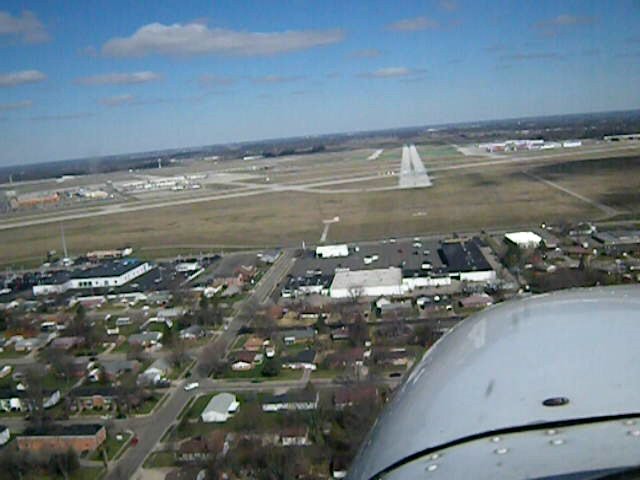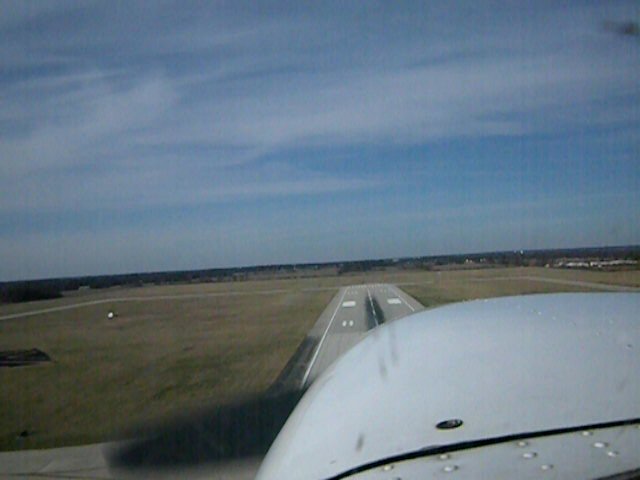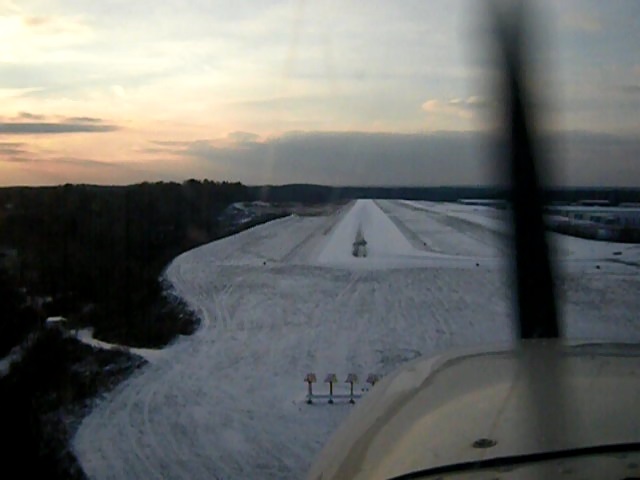Captain YS's Flight Log Book |
|
Please enable JavaScript to display links.
|
|
Oope, I was not updating this page since march. I was flying. I was just too lazy to upload here. I have flown 38.5 hours in 2017. I try to fly 50 hours per year, but it is not easy.
3/13/2017 I planned to fly to Niagara Falls with two visiting scholars from Japan this Sunday. The forecast was predicting a fair weather, but the temperature was the problem. I always fly IFR when I go long cross country. I don't care about the cloud in summer. Rather, I like to fly through clouds. However, the air temperature this Sunday was unseasonably cold. Flying into clouds poses an icing hazard. If someone had reported icing, it would be considered a "known icing condition." It is illegal to fly into a known icing condition unless the airplane is equipped with an appropriate anti-icing equipment. Therefore, if it turned out to be cloudier than forecasted, it was going to be difficult. And the forecast changed to cloudy the day before the flight. Not just cloud, some forecast stations were predicting light snow. Even worse, the cloud height was going to be 3,000ft AGL. The elevation near Niagara Falls is about 600ft. The cloud height would be 3,600MSL. The minimum altitude for flying over the falls was 3,500ft MSL. I was going to have only 100ft below cloud, which was below minimum for a VFR flight. I could descend through the cloud and make it to the Niagara Falls airport, but it would be less fun if I cannot fly over the falls. I decided that it would be better to change the destination than forcing it to the falls. But, there are not many sight-seeing destination that I can make a day cross-country. How about the National Museum of the United States Air Force at Dayton? It is about 20 minutes drive from the airport to the museum. I called an FBO, Stevens Aviation, at the Dayton International airport, and they said I could use a crew car. Then there is no problem in the transportation in Dayton. I changed the destination to Dayton. We left Pittsburgh at 8am, and arrived at Beaver around 9am. The weather was bad. The sky was covered by the overcast layer from the lake effect. The flight is very often hindered by the lake effect around Pittsburgh in winter. The lake effect looks to be very difficult to predict. Even when the forecast is predicting a clear sky, we often end up grounded by the overcast layer and/or precipitation from the lake effect. It was a typical lake-effect cloud with flurries. I didn't want to take off while it is snowing, but the snow stopped while I was performing the pre-flight inspection. The cloud was at 4,800ft. My filed altitude was 8,000. From the ground, I could see blue patches here and there. The overcast layer must be very thin. Only good thing about the lake-effect cloud is it is usually very thin. So far, the weather briefer gave me no report of icing. It was not yet a known icing condition. I should be able to break through the thin cloud layer. I decided to go. I was first assigned 3,000ft from the tower, but Pittsburgh approach gave me 8,000ft as soon as I was handed off. I tried to find a thin part of the cloud and flew into it. As expected, it took less than 30 seconds to break through the layer, and we were above the blanket of the cloud. The air was super smooth that we felt as if we were not flying. The cloud broke apart as we came near Columbus, OH. The rest was an easy flight.
Stevens Aviation was so kind. When we arrived, the crew car was already parked outside the FBO. Very nice FBO. I can definitely give five-star rating to them. We drove about 20 minutes to get to the museum. I heard that the museum got the new fourth hanger a few years back, but I hadn't had chance to visit there. The precious XB-70 Valkyrie was on display in the new hanger. It once was kept in a small hanger, and I could not see its beautiful shape. But, now, you have a very nice look from the second floor balcony. Beside XB-70 was X-29, forward sewpt wing experimental aircraft, hanging from the ceiling. It appears as if it were flying. Very nice display. It was very nice.
I called the briefing before the return flight. The briefer mentioned about one report of icing. Now it is a known icing condition. I am not allowed to fly into cloud even if I am flying on IFR flight plan. I had to descend before I hit the overcast layer. For some reason, the Indianapolis Center Air Traffic Controller had difficulty in my Japanese-dialect. In my theory, some native English speakers are paying most attention to the pronunciation, some are listening to the rhythm, and some are picking up intonation. People who speaks English as second language do not have the same facial muscles as the native English speakers. It is nearly impossible for us to pronounce like a native speaker. What I found was it is the easiest to copy the rhythm. Intonation is the second easiest. But, there is no way to pronounce like a native. My strategy works most of the time, and I have little difficulty talking with Pittsburgh ATCs, Beaver Tower, and Allegheny Tower, but sometimes I have difficulties with other ATCs. I suppose they get my transmission better if they have experiences with international flights from non English speaking countries, but I can understand that not many of such international flights talk with Indianapolis center. (And, after the airlines switch to text-based communication, no ATC would speak with Asian airline pilots.) Anyways, I somehow got a permission to descend to 3,000ft before Briggs VOR. Actually, I could have stayed higher all the way. The lake effect clouds were already breaking up at the time we came back to Beaver. I did one touch & go then full stop. It gave me 1,500th logged landings. I'm sure I miscalculated the number of landings while in a pattern. Actual landing count probably is not exactly 1,500. It is just a number. Nonetheless, I am happy to pass a milestone. The university is still off. The semester will not start until 1/17. I was hoping to fly a few times in December, but the weather was bad, or I had something else to do if the weather is good, and the New Year's day was a great flyable day but the flight school was closed and could not rent an airplane. I finally was able to fly this Friday. I hadn't flown over a month then. That long no-flying time makes me wonder if I am really able to fly. Had I been really flying? But, as I update charts on my iPad mini, charge batteries for my cameras, call weather briefing, file flight plan, and do pre-flight inspection, my confidence comes back. It is always good to establish a routine. The routine mentally prepares you for doing something, not just flying. Pittsburgh was hit by a moderate snow storm the day before the flight. I had to venture into the storm, driving to a bowling alley because I am now bowling in a sanctioned league. That adventure paid off. I bowled 3-game total of 609. My score is going up recently. I had been in a slump after making a big change in the form last year. But, there was a paradigm shift a few weeks ago. I was thinking to throw the ball. But, now what I do is swing the arm. Just a tiny change of the way of thinking. But, it substantially increased my ball speed. I have been able to hit the head pin exactly as I wanted, but was leaving pins. Now, when I hit the head pin as I want, I get a strike. I drove home happily, although a little bit of bitter feeling from the team loss in the last game. If I had bowled my average, the team would have won. But, my worry was then the runway condition on the next day. As I was worried, the runway and taxiway were not plowed. I think it was covered by at least 2 inches of snow. I was of course trained to take off and land on a soft field, but this was my first time to actually do it. Well, not too a soft field, but definitely softer than usual. It was a totally new feeling to approach to a runway with tracks of previously-landed airplanes on the snow. It was a good experience after all.
This flight gave me 300th hour of my actual PIC time. The United States regulation allows me to log Pilot-In-Command (PIC) time regardless of the presence of an instructor, once you are licenced to fly. But, Japanese regulation doesn't. Although my chances of flying an airplane as a pilot in Japan is slim, I keep track of actual PIC time in my Excel-version logbook. I am keeping my Excel version and official paper version in sync. I will soon reach 500 hour PIC time base on the U.S. regulation. Also, the total flying time is getting close to 600 hours. My 1500th landing will come soon as well. Those milestones I am expecting to reach this year. I will continu flying with the safety as the first priority. I thank the United States for giving me this opportunity to fly, and I thank Moore Aviation and PFTC for letting me use their airplanes, and I thank Cessna 172s for lifting me up.
[Click here for posts from 2016]
|
|
|
Please enable JavaScript to display links.
|
| Comments are welcome.
Send E-Mail to:
|


